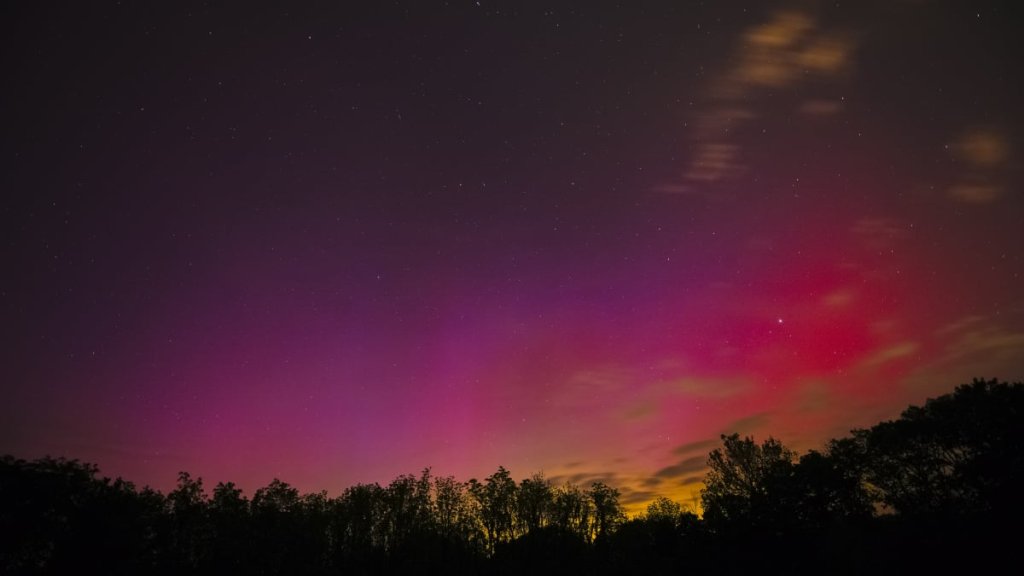An extreme geomagnetic storm that first hit last week is expected to become more intense, according to the U.S. National Oceanic and Atmospheric Administration, as several coronal mass ejections are due to bombard Earth’s outer atmosphere in space later on May 12.
That means many people who haven’t witnessed a rare aurora borealis may still have a chance to see it. People throughout the United States, United Kingdom, and other locations worldwide reported sightings Saturday of the Northern Lights, usually only visible at night near the North Pole. However, a similar effect happens near Antarctica, too.
The sun had a strong solar flare — a gigantic burst of energy — at 12:26 p.m. ET Sunday. This flare was classified as an X-1.0, among the most intense flares observed. Experts warned the incident could create temporary problems or lost signals for users of high-frequency radio communication.
“Solar flares send tons of energy whizzing through space at the speed of light,” according to NASA. “Sometimes flares come with huge solar eruptions. These eruptions are called coronal mass ejections.”
An aurora’s display of colors is the result of electrons shot out of the sun during solar storms. As the charged particles reach Earth, they travel along the planet’s invisible magnetic field lines into the atmosphere, interacting with the air. When those particles strike gasses, they heat up and glow, according to NASA.
The colors differ depending on the type of atmospheric gas and its altitude. Oxygen glows red or blue, while nitrogen can create green, blue, or pink. The recent strong solar storm conditions are causing the aurora around the north pole to be much more widespread, allowing people who live farther south to see them.
Similar to storm seasons on Earth, the sun experiences a weather pattern that repeats every 11 years. At the beginning and end of the cycle, that activity is at its calmest. But solar activity increases, climaxing in the middle of the cycle and causing the sun to roil with giant eruptions.
Right now that cycle is about to peak, close to reaching its maximum point in mid-2025. That’s why reports of solar flares and coronal mass ejections — plasma spewed from the sun’s outer atmosphere, called the corona — are more abundant in the news.
Coronal mass ejections like the ones approaching Earth, or CMEs, are referred to as “space weather.” Though the sun is about 93 million miles away, space weather can affect Earth and other parts of the solar system.
Scientists have a limited ability to forecast space weather. Here, the atmosphere and magnetic field shield people against the most harmful health impacts of solar radiation. However, these events can have catastrophic consequences on technology, disrupting power grids, telecommunications, and GPS systems.
Though these incidents don’t happen often, a solar flare in March 1989, for example, caused all of Quebec, Canada, to experience a 12-hour power outage. It also jammed radio signals for Radio Free Europe.
Prior to Sunday’s flare, the sun ejected two other strong solar flares just before 9:30 p.m. ET Friday and 8 a.m. ET Saturday, according to NASA. The U.S. space agency’s Solar Dynamics Observatory, which watches the sun constantly, has snapped pictures of these events as well. The previous two flares were classified as X-5.8 and X-1.5, respectively.
NOAA, which is continuing to monitor the storm for the U.S. government, said these flares seem to be linked to a sunspot estimated to be perhaps 15 times wider than Earth.
Topics
NASA

